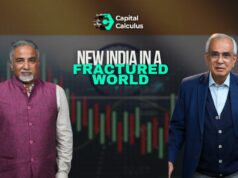U.S. Vice President JD Vance and the second family will travel to Italy and India from April 18 to 24, with plans to advance economic and strategic discussions in both countries.
According to a statement from the Vice President’s office, JD Vance will first visit Rome before heading to India later in the week.
His wife, Usha Vance—America’s first Indian-American second lady—will accompany him, along with their three children: Ewan, Vivek, and Mirabel.
First Trip To India
This marks Vice President Vance’s first official trip to India. During his visit, he will meet Prime Minister Narendra Modi on April 21 in New Delhi, as confirmed by the Ministry of External Affairs.
The Vance delegation will also travel to Jaipur and Agra, participating in cultural events alongside bilateral engagements.
Trade Talks
Vance’s India visit comes amid renewed trade tensions, following President Trump’s recent call for a 90-day global suspension of reciprocal tariffs—excluding China—as concerns over a potential trade war escalate.
Trade talks are expected to feature prominently in the discussions, with a senior Indian official telling Bloomberg News that India hopes to finalise a trade agreement with the U.S. within six weeks.
Vance-Modi Paris Meeting
This trip follows a meeting between Modi and Vance in Paris in February, on the sidelines of the AI Action Summit.
That meeting preceded Modi’s US visit to meet President Donald Trump, who had recently returned to office.
The White House noted that the two leaders discussed expanding US-India cooperation in clean energy, particularly through American nuclear technology.
Vance’s Italy Trip
In Italy, Vance is scheduled to meet Prime Minister Giorgia Meloni and Vatican Secretary of State Cardinal Pietro Parolin.
His meetings in Rome will coincide with Easter-related ceremonies and follow Meloni’s own visit to Washington for talks with President Donald Trump, where EU tariff relief is on the agenda.
Vance’s visit comes as trade negotiations heat up under Trump’s renewed trade agenda.
Previously imposed tariffs triggered global market volatility, though the administration later scaled back the measures to a temporary 10% rate to allow time for new deals. Both Italy and India are critical U.S. trading partners seeking resolution under this framework.





